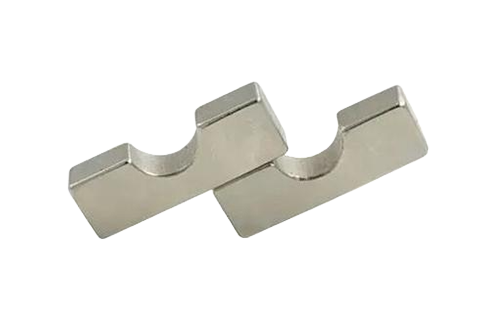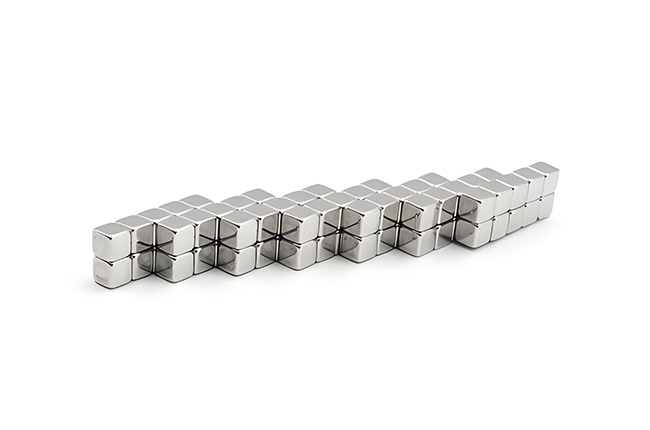

NdFeB (neodymium-iron-boron) magnets are composed of specific elements that give them their strong magnetic properties. Understanding the raw materials used in their production helps in evaluating their performance and applications.

Primary Components
The main constituents of NdFeB magnets are:
1.Neodymium (Nd)
A rare-earth metal that provides high magnetic strength
Contributes to the magnet's coercivity (resistance to demagnetization)
Typically comprises 29-32% of the magnet's composition
2.Iron (Fe)
Forms the structural base of the magnet
Enhances magnetic flux density
Makes up about 64-68% of the material
3.Boron (B)
A metalloid that improves the magnet's crystalline structure
Helps maintain magnetic stability
Accounts for approximately 1-1.2% of the composition
Additional Elements
Modern NdFeB magnets often contain supplementary materials to enhance performance:
Dysprosium (Dy) or Terbium (Tb): Added to improve high-temperature performance
Cobalt (Co): Sometimes used to enhance corrosion resistance
Aluminum (Al), Copper (Cu), Niobium (Nb): Trace elements that modify magnetic properties
Manufacturing Process
The production of NdFeB magnets involves several key steps:
1.Alloy Preparation:
Raw materials are melted in a vacuum induction furnace
The molten alloy is cast into ingots or thin strips
2.Pulverization:
The alloy is ground into fine powder
Particle size typically ranges from 3-5 micrometers
3.Pressing and Alignment:
Powder is compacted in a magnetic field to orient particles
Performed either through die pressing or isostatic pressing
4.Sintering:
Compressed powder is heated to near-melting temperatures
Creates a dense, solid magnet structure
Machining and Coating:
5.Magnets are cut to final dimensions
Protective coatings (nickel, zinc, epoxy) are applied
Material Characteristics
The raw materials contribute to NdFeB's notable properties:
High remanence (magnetic strength)
Considerable energy product
Moderate coercivity
Susceptibility to corrosion

Applications
These material properties make NdFeB magnets suitable for:
Precision motors and generators
Computer hard disk drives
Medical imaging equipment
Audio devices and speakers
Various industrial sensors
Conclusion
NdFeB magnets derive their exceptional performance from carefully balanced combinations of neodymium, iron, and boron, with optional additives for specialized applications. The specific composition and manufacturing process determine the final magnetic characteristics, making these magnets versatile solutions for demanding technological applications.
Contact

We will contact you within 24 hours. ( WhatsApp/facebook:+86 15957855637)



